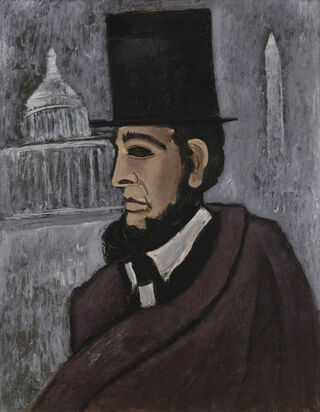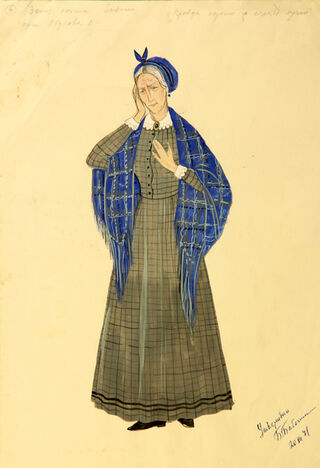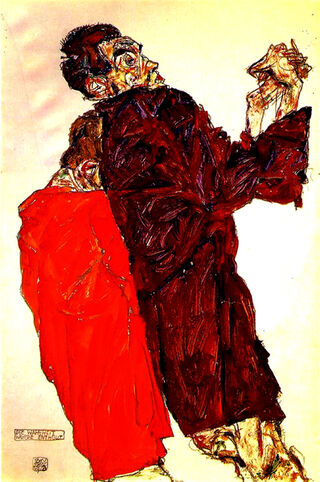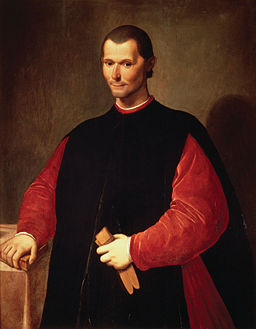Deception
The Truth in Masquerade
Deception is common, but detection is not.
Posted February 22, 2021

“One who deceives will always find those who allow themselves to be deceived,” wrote the unsentimental political realist Machiavelli (The Prince, Chapter XVIII, 1513). Machiavelli once revealed he told so many lies it was hard to find the truth among them (letter, 1521).
Deception is an integral part of all nature: Plants have protective coloring, and animals use camouflage, mimicry, and even feign injury and death for survival (Wile, Archives of Neurology and Psychiatry, 1928; King and Ford, Acta Psychiatrica Scandinavica, 1988).
While deception is characteristic of the animal kingdom, human deception is a psychological process (Abe, The Neuroscientist, 2011) that has been "elevated to the fine art of lying" (Ford et al., American Journal of Psychiatry, 1988). Lying is commonly experienced daily (Ditmarsch et al., Trends in Cognitive Science, 2020) and is pervasive in social interaction (E.B. Ford, International Journal of Law and Psychiatry, 2006). Our human nature draws us to the plots of innocent people we become convinced are wrongly accused of murder only to learn through intricate twists they are, indeed, seductive villains who have now escaped prosecution. Examples include (spoiler alert) Agatha Christie’s original 1925 gripping short story Witness for the Prosecution and the 1985 legal thriller Jagged Edge. Double Jeopardy (i.e., the inability to be tried twice criminally for the same crime) is even written into the Fifth Amendment of our U.S. Constitution.

“Truthfulness, honesty, and sincerity are the foundations" and the “binding mortar” of our social structure. Truth, then, becomes a “socially protective device” whereby lying is held in contempt and a potential threat to the status quo (Wile, 1928). Lies, though, can be tolerated by a group when they represent loyalty to the group. "The lie may grow from loyalty or loyalty may grow from the lie" (Wile, 1928).
Sincerity with truth is one of the five cardinal virtues of Confucius and part of Buddha’s philosophy as well (Wile, 1928). “Thou shalt not bear false witness" is one of the Ten Commandments in Judeo-Christian doctrine. Theologian St. Augustine (5th century AD) wrote two books on lying. The Book of Revelations (21:8) describes that all "unrepentant liars" will be punished in the sulfurous lake of fire on the Day of Judgment.
What is a lie? “’T is but the truth in masquerade,” wrote Lord Byron in his 19th-century poem "Don Juan" (Canto the Eleventh). A lie is a deliberate attempt to conceal and falsify truthful information (Gombos, Genetic, Social, and General Psychology Monographs, 2006; Pennycook and Rand, Journal of Personality, 2020) for a preconceived goal or purpose (Ford et al., 1988), such as to gain some benefit or avoid loss (Abe, 2011). There is, though, a psychiatric condition of unknown etiology, pseudologia fantastica, in which a person lies persistently, compulsively, and “disproportionately to any discernible end" and without apparent reason (Dike et al, Journal of the American Academy of Psychiatry and the Law, 2005; King and Ford, 1988; Curtis and Hart, Psychiatric Research and Clinical Practice, 2020).

Importantly, lying requires a conscious intent on the part of the liar to mislead. This conscious intent distinguishes liars from those misinformed or deluded. Misinformation, for example, is inadvertently false but spread without intent to do harm, whereas disinformation involves information knowingly created to mislead and cause harm (Wang et al., Social Science & Medicine, 2019).
Some researchers divide liars into categories: from most people who tell "white lies" to spare the feelings of others to some who tell "small" lies to present themselves better and, ultimately, to those who tell blatant falsehoods for gain (Ditmarsch et al, 2020); others distinguish among pathological liars, professional liars (i.e., con men), spies, and patients with psychosis or organic brain syndrome (Renshaw, Clinical Therapeutics, 1993).
People lie for different reasons, including to avoid consequences, responsibilities, exposure, loss of status, or to get or keep rewards. Some risk-takers lie for the thrill of the challenge (Renshaw, 1993). Those who feel powerless may resort to lying to gain greater control over their environment (Ford et al., 1988)

Detecting deception and dishonesty is surprisingly difficult (Gombos, 2006) and often no better than chance (Brashier and Marsh, Annual Review of Psychology, 2020) or a “best guess game” (E.B. Ford, 2006). People typically overestimate their ability to detect deception, particularly from non-verbal cues such as gaze aversion, but verbal cues, including changes in the voice, can assist in detection (Vrij et al., Annual Review of Psychology, 2019; See also John Colapinto's fascinating new book This is the Voice, 2021, for a discussion of "vocal masquerades"). Though Freud believed we mortals cannot keep secrets such that when our "lips are silent," we "chatter with our fingertips," and “betrayal oozes from every pore”(Studies in Hysteria, Dora, Standard Edition, Vol. VII), the notion of the “leaky liar” is mostly myth (Vrij et al., 2019). Each person, for example, displays “an almost unique set of cues to deceit” that even varies with the type of lie told (Vrij et al., 2019).
Throughout the years, there have been some bizarre attempts to determine deception, including putting dry rice in someone’s mouth, throwing a person into water, exposing him or her to hot coals or fire (Vicianova, Europe’s Journal of Psychology, 2015), or using phrenology, facial expressions, or graphology (E.B. Ford, 2006). The first primitive lie detector (polygraph), developed in 1917, used physiological measures of changes in pulse and blood pressure to gauge deception (E.B. Ford, 2006), but autonomic responses are not specific to lying (E.B. Ford, 2006). More recent techniques include the use of EEG patterns (“brain fingerprinting”) and fMRI readings to localize brain activity, but to date still remain “often little more than a pseudoscience”(Vrij et al., 2019).

Lying is cognitively more challenging than telling the truth (Ditmarsch et al., 2020). We humans seem to be unique in our psychological ability to understand that others’ beliefs and intentions are different from our own (Hall and Brosnan, Infant Behavior & Development, 2017). Only when this understanding, i.e, this so-called “theory of mind," has developed are we able to manipulate and deceive (Hall and Brosnan, 2017; Gombos, 2006).
Children as young as 3 can make factually untrue statements but have difficulty understanding the concept of deception (Abe, 2011; Ditmarsch et al., 2020). Children's executive functioning, which is involved in inhibition, attention, error detection, and emotional control, is not sufficiently mature (Abe, 2011). The anterior cingulate gyrus and dorsolateral prefrontal cortex are those areas of the brain most prominently active during deception (Gombos, 2006). By age 7 or 8, children are able to prevent the "semantic leakage" of a lie and can "maintain" the lie in statements that follow (Ditmarsch et al, 2020). How much a child is exposed to the lies of others, as well as how parents respond to children's own lies, can determine whether a pattern of lying will persist throughout life (Ford et al., 1988).

Bottom line: Lying involves a conscious intent to deceive and ranges from the small, "white" lies that most people tell occasionally to avoid hurting others’ feelings to the enormous lies that can have a major societal impact. It requires a certain level of cognitive maturation, including a sense that others’ beliefs and intentions are different from our own. Though very young children may tell untruths, they don’t fully appreciate the concept of lying until around age 7 or 8. Detecting deception, though, is surprisingly difficult, and even centuries after the time of Machiavelli, we are often no better at it than chance.




